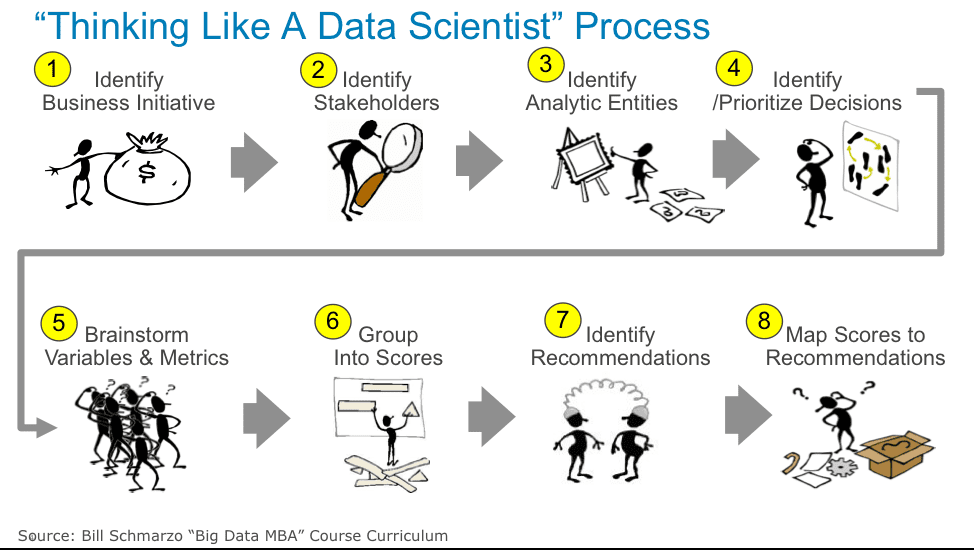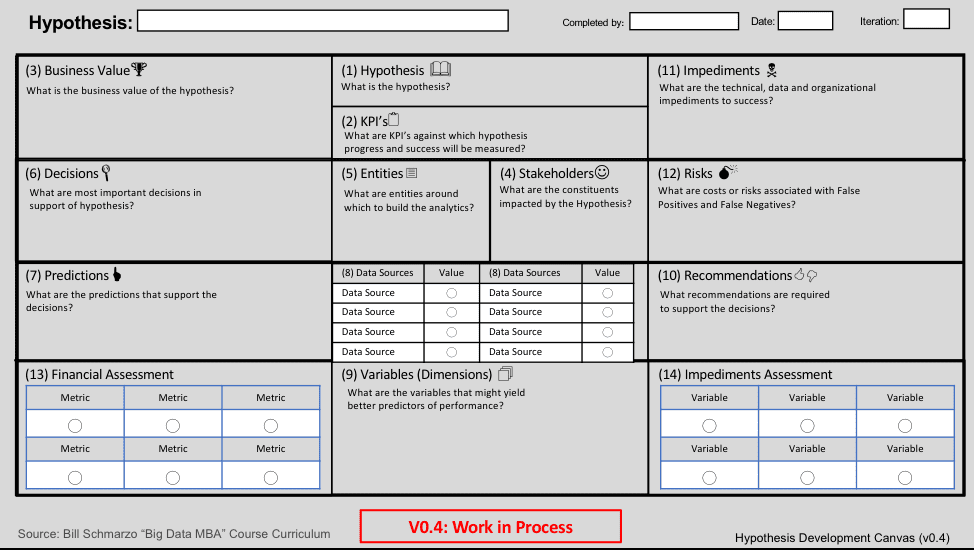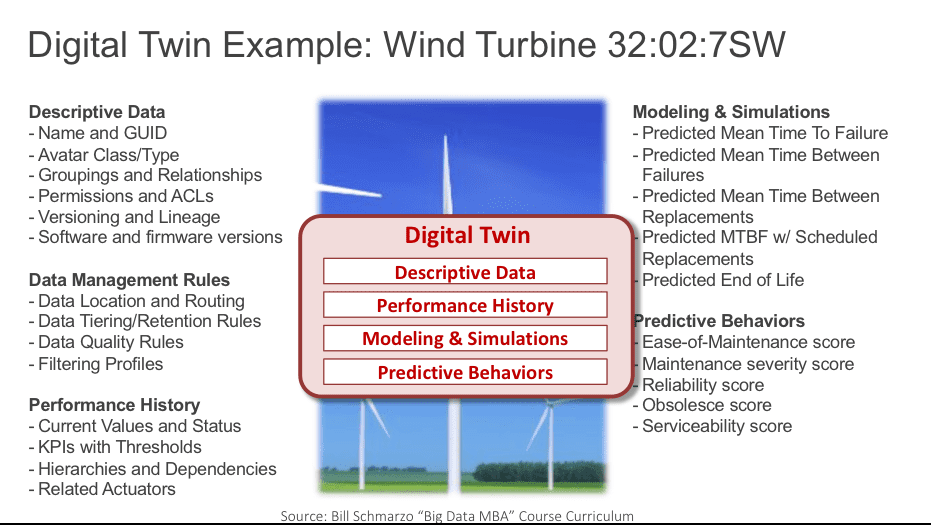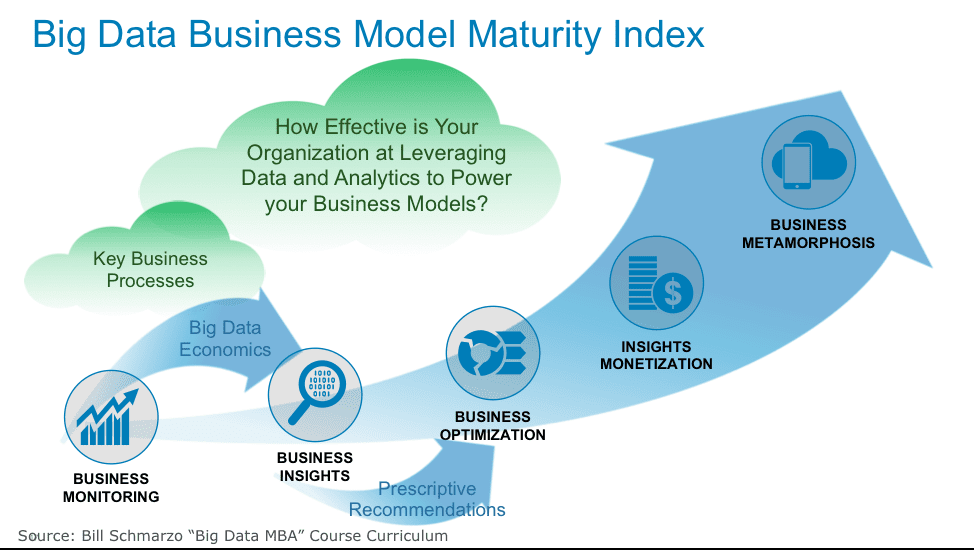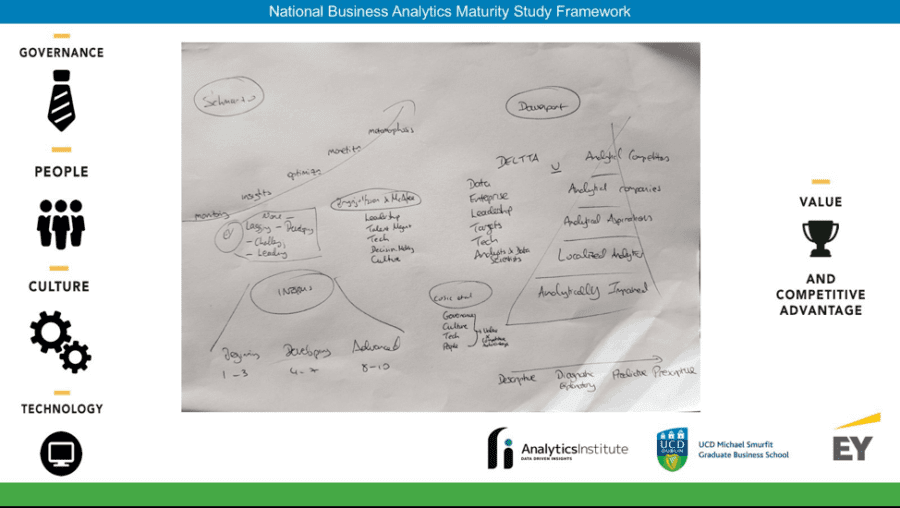I recently had the great opportunity to keynote the Analytics Institute of Ireland’s annual conference. The event was marvelous! Over 500 attendees, outstanding presentations from an impressive lineup of presenters, and heavy engagement from the participants before, during and after my keynote.
Lorcan Malone, CEO of Analytics Institute; Yvonne Holmes, AIB; and Bill Schmarzo of Hitachi Vantara, at the National Analytics Conference, hosted by the Analytics Institute at the Mansion House, Dublin
The event was housed in Ireland’s first house of parliament (the Mansion House) and was filled with Irish tradition. And you can’t help when you think of Irish history (or folklore) about Saint Patrick driving the snakes out of Ireland. So with that as motivation, here is how I would approach driving the data science snakes out of Ireland and helping the Emerald Island to further its journey into data science.
Snake #1: “We Need More Data Scientists”
No, you don’t need more data scientists; you need to build your entire data science community, which includes data scientists AND data engineers AND business stakeholders (see Figure 2).
Figure 2: Building Your Data Science Community
Data science is a team sport and ensuring that all the data science players are pursuing the same objectives and measuring progress and success with the same key performance indicators and metrics is key to business success. One of the key activities to building out the data science community is turning the business users into “students of data science.” We use the “Thinking Like A Data Scientist” methodology as the foundation for that training (see Figure 3).
Figure 3: Training Business Stakeholders to “Think Like A Data Scientist”
The Analytics Institute of Ireland, under the leadership of Lorcan Malone, is working with the Edison Data Science Frameworkto define a collection of materials that breakdown the complexity of the skills and competences need to define Data Science as a professional practice. Check out the Analytics Institute Industry Certificationwebsigte to learn more about the data science certification programs that they offer.
Having more data scientists just isn’t sufficient. We need all parts of the organization to “Think Like a Data Scientist.”
Snake #2: “Just Grab the Data and Start Playing With It”
While it’s lots of fun to grab a tool like Tableau and just start playing with the data, it’s very hard to know if one has found anything meaningful if they’re not sure what they’re looking for.
As Yogi Berra famously said: “If you don’t know where you are going, you’ll end up someplace else.”
To ensure that our data science project is searching for strategic, actionable and meaningful insights with respect to the organization’s most important business initiatives, we have created the Hypothesis Development Canvas (see Figure 4).
Figure 4: Hypothesis Development Canvas version 0.4
We developed the Hypothesis Development Canvasto ensure that you thoroughly understand what you’re trying to accomplish, the related business and operational value, how you will measure progress and success, and the impediments and potential risks associated with the hypothesis. The Hypothesis Development Canvas is designed to facilitate the business stakeholder-data science collaboration.
Snake #3: “It’s all about Technology like Machine Learning and AI”
More powerful than Machine Learning and Artificial Intelligence, is the power of Economics. Economics is the branch of knowledge concerned with the production, consumption, and transfer of wealth. In particular, economics is about identifying the sources of customer and market value creation. As I discussed in the interview “Big data is now economics and not just technology”:
“…we tend to think about big data and data science and machine learning and artificial intelligence as a technology conversation. I’m going to change the frame entirely here. It’s an economics conversation. It’s not a technology conversation. Technology is critical, right? We need to understand that there are 27 different types of neural network capabilities out there. But in the end, it’s an economic conversation. What am I doing, from an organizational perspective, to identify and capture those sources of value and wealth creation? That’s economics.”
Snake #4: “Big Data is About Data Volume”
It’s not the volume of data that makes big data valuable; it’s the granularity. It’s the ability to build detailed Analytic Profiles on individual humans (behavioral models) or things (digital twins). Analytic Profiles provide an asset model for capturing the organization’s analytic assets in a way that facilitates the refinement and sharing of those analytic assets across multiple business use cases. An Analytic Profile consists of metrics, predictive indicators, segments, scores, and business rules that codify the behaviors, preferences, propensities, inclinations, tendencies, interests, associations and affiliations for the organization’s key business entities such as customers, patients, students, athletes, cars, locomotives, CAT scanners, and turbines (see Figure 5).
Figure 5: Digital Twin Example for a Wind Turbine
Analytic profiles is an important data science concept because it is around these analytic profiles that organizations will drive their data monetization efforts. See the following blogs for more details on analytic profiles and digital twins:
- Analytic Profiles: Key to Data Monetization
- Best Practices for Analytics Profiles
- Cohort Analysis in the Age of Digital Twins
Snake #5: “Data Science Initiatives Must be Led by the CIO”
The most successful data science initiatives are not led by the CIO, but the business. Organizations that are deriving and driving the most success from their data science initiatives are those where the business leaders are setting the business, operational and financial objectives, and collaborating with the data science team to build the analytics that support those objectives. Data Science is ultimately about business models, and how effective an organization is at leveraging data and analytics to power their business models (see Figure 6).
Figure 6: Big Data Business Model Maturity Index
By the way, I was greatly honored when Professor Michael O’Neill, ICON Chair of Business Analytics and Director UCD Natural Computing Research & Applications Group, included me in the same chart as Thomas Davenport when comparing analytics business models at the conference (see Figure 7). That’s rarified atmosphere!
Figure 7: Comparing Schmarzo and Davenport Analytics Maturity Models
Snake #6: “Data Monetization is About Selling Your Data”
Too many companies think data monetization is about selling their data; they take a “value in exchange” or accounting perspective which is a natural reaction given the balance sheet aspect of typical corporate assets.
However data monetization is a “value in use” play where the value of the data is determined by how much value you can derive from the data in support of the organization’s most valuable or important business and operational use cases (e.g., reduce customer attrition, reduce excessive and obsolete inventory, improve on-time delivery, reduce unplanned patient readmissions, improve 5-year college graduation rates). Data Monetization is an economics play in using the data to create new sources of wealth or value.
Check out University of San Francisco research paper “Determining The Economic Value of Data” for more thinking about how an organization can leverage economics and data science to determine the value of their data.
The Snakes of Data Science Summary
The investment that Ireland is making into the worlds of Big Data, Data Science, Machine Learning and Artificial Intelligence is impressive. You can bet that I’ll be back to chase out any remaining Data Science snakes while enjoying a glass of Guinness or two or three!


